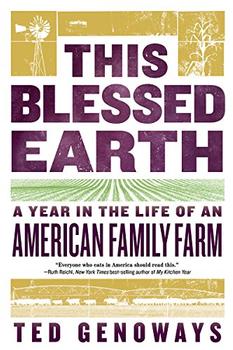Summary | Excerpt | Reading Guide | Discuss | Reviews | Beyond the book | Read-Alikes | Genres & Themes | Author Bio

From the winner of the Pulitzer Prize, a powerful, engrossing new novel - the life and times of a remarkable family over three transformative decades in America
On their farm in Denby, Iowa, Rosanna and Walter Langdon abide by time-honored values that they pass on to their five wildly different children: from Frank, the handsome, willful first born, and Joe, whose love of animals and the land sustains him, to Claire, who earns a special place in her father's heart.
Each chapter in Some Luck covers a single year, beginning in 1920, as American soldiers like Walter return home from World War I, and going up through the early 1950s, with the country on the cusp of enormous social and economic change. As the Langdons branch out from Iowa to both coasts of America, the personal and the historical merge seamlessly: one moment electricity is just beginning to power the farm, and the next a son is volunteering to fight the Nazis; later still, a girl you'd seen growing up now has a little girl of her own, and you discover that your laughter and your admiration for all these lives are mixing with tears.
Some Luck delivers on everything we look for in a work of fiction. Taking us through cycles of births and deaths, passions and betrayals, among characters we come to know inside and out, it is a tour de force that stands wholly on its own. But it is also the first part of a dazzling epic trilogy - a literary adventure that will span a century in America: an astonishing feat of storytelling by a beloved writer at the height of her powers.
Smiley uses an unusual technique to bring their world close to the reader by depicting it through the eyes of baby Frank. The effect is one of immediacy, as his world is made mostly of sensations and wonder. The sensations around his Mama are soft and pleasant, while those around his Papa are more likely to be rough and noisy. Thus, the reader discovers the world along with the baby, and this gradual discovery that expands from the mother’s lap to what happens out of the window, leads to a very sensory reading experience...continued
Full Review
 (668 words)
(668 words)
(Reviewed by Alta Ifland).
 Michelle Hoover's The Quickening covers roughly the same timeframe and space as Jane Smiley's Some Luck: from the beginning of World War I (rather than its end in Smiley's novel) to 1950, on neighboring farms in the upper Midwest. Hoover, the granddaughter of four farming families, grew up in Ames, Iowa – where Smiley attended graduate school – and her rootedness in this place is evident in her mastery of the characters' dialogue, their unsentimental, earthy personalities, and her rich descriptions of daily farm life. Through a journey that lasts almost half a century, Smiley and Hoover help us understand how American farmers lived during this period.
Michelle Hoover's The Quickening covers roughly the same timeframe and space as Jane Smiley's Some Luck: from the beginning of World War I (rather than its end in Smiley's novel) to 1950, on neighboring farms in the upper Midwest. Hoover, the granddaughter of four farming families, grew up in Ames, Iowa – where Smiley attended graduate school – and her rootedness in this place is evident in her mastery of the characters' dialogue, their unsentimental, earthy personalities, and her rich descriptions of daily farm life. Through a journey that lasts almost half a century, Smiley and Hoover help us understand how American farmers lived during this period.
Like Some Luck, The Quickening is written ...

If you liked Some Luck, try these:

by Ted Genoways
Published 2018
Is there still a place for the farm in today's America?

by Min Jin Lee
Published 2017
A new tour de force from the bestselling author of Free Food for Millionaires, for readers of The Kite Runner and Cutting for Stone.